Improving the accuracy of ammunition
Afghanistan, 2011 year. Marines shoot M982 Excalibur projectile with M777 howitzer
Major suppliers of precision-guided munitions strive to make their products even more accurate and develop increasingly reliable and accurate guidance systems that can withstand jamming by the enemy.
High-precision munitions are one of the most important elements of modern ground forces, and the need to reduce civilian and allied casualties in current conflicts and reduce damage to infrastructure places high demands on their accuracy.
In the high-precision ammunition sector, there are several different directions, from standard NATO 155-mm artillery to mortar sets. “One of the main areas of potential development is the market for controlled mortar shots,” said Paul Daniels, Excalibur program manager at Raytheon. “And in the 155 mm caliber, Raytheon developed the Excalibur high-precision long-range artillery shell.”
“The mine management market is new and promising for Raytheon and the entire industry,” he added. “Given the enormous, one might say global number of 120-mm mortars, the market potential is very promising.”
Constant needs
A significant event in this part of the sector occurred in December 2015, when Raytheon received a contract worth 98 million dollars to fulfill the requirements of the United States Marine Corps (KMP) for a precision precision PERM (Precision Extended Range Munition) part of the 120-mm mortar shell . Daniels said that "PERM will be able to increase the range of US MMP shafts from the original 8 km to more than 16 km, and it also has an accuracy similar to that of the Excalibur system, plus PERM can be called the Excalibur for mortars."
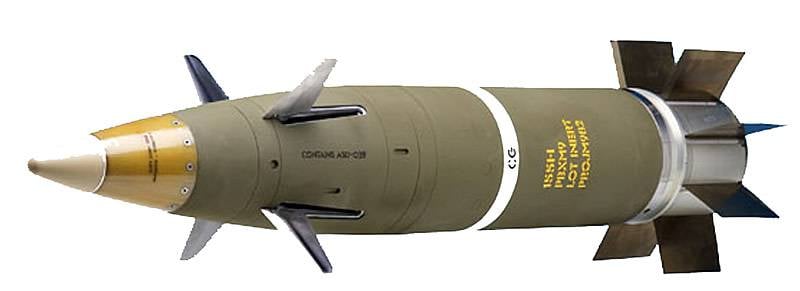
Raytheon M982 Excalibur guided missile
The company is currently implementing the PERM qualification program. It will be followed by the initial production of a small batch, after which full-scale production will begin. Daniels said that PERM was not yet sold abroad, because the program is in the initial stages. However, he said that "several countries showed interest in the possibility of its acquisition" within the framework of the law on the sale of arms to foreign countries.
The US Army also has a need for similar 120-mm guided mortar ammunition and, in this regard, began its program for high-explosive fragmentation guided mortar shells HEGM (High Explosive Guided Mortar). The US Army Contracting Authority announced in April 2015 of the year that it was conducting market research to determine the contractors for the execution of the program on its mortar system.
The system must be able to operate in the entire range of military operations, on all types of terrain, in any weather and, as stated in the statement issued by the company, “must include the ability to disable manpower inside buildings and behind fortifications, or unarmored standing vehicles funds, as well as people in open areas with a minimum of indirect losses. "
This made it possible to identify a number of requirements for HEGM, including reducing the circular probable deviation from 10 meters to one meter, the ability to work in the absence of a GPS signal or jamming, and the ability to hit targets moving at speeds up to 24 km / h. “The muzzle loading projectile itself will be able to fire from the current and future 120-mm smooth-bore mortar systems of the American army,” the statement said. The Army predicts production in the number of 15000 shots; The three-year production cycle will begin in 2020.
Raytheon regards HEGM as an interesting opportunity for PERM, since their requirements are similar. “Although the US KMP has 120-mm rifled mortars armed, Raytheon designed PERM so that it is also compatible with smooth-bore mortar barrels,” explained Daniels. “After all, the US Army is armed with smooth-bore mortars.”
He noted that the army can use the experience gained by the US KMP in the development of its guided munition, in order to speed up and reduce the cost of its HEGM program. “KMP purchased Excalibur developed by the army. Now the army can do the same with the PERM shell developed by the Marine Corps. ”
In the HEGM program, Raytheon has a strong competitor. Orbital ATK has lost Raytheon's contract on PERM for the ILC, but offers its new high-precision mortar system as an option for army requirements.
Ammunition Transformation
Orbital ATK is developing its Scorpion system, which is a further development of its high-precision XM395 mortar ammunition, which the US Army is offering for its initiative APMI (Accelerated Precision Mortar Initiative - Accelerated High-Precision Ammunition Initiative). APMI itself was based on the Orbital ATK Precision Guidance Kit PGK (Orbital ATK) for 155-mm artillery shells, which was designed to transform conventional shells into high-precision ammunition.
Orbital ATK Scorpion mortar mines system
The APMI program is currently close to completion, but a company spokesman said that Orbital ATK is confident that they can use the experience of the APMI initiative and provide the army with a suitable solution for the HEGM program. The PGK solution makes it possible to convert standard 155-mm artillery shells into precision-guided GPS-guided munitions at relatively low cost. The PGK system can significantly reduce the dispersion of artillery shells, from about 200 meters to 30 meters.
The company Orbital ATK states that PGK "fills the gap in efficiency between traditional artillery and advanced intellectual ammunition" and that it allows it to be done at a lower cost with higher reliability. A homing unit, the size of a standard fuse that fits into the slot of a standard projectile fuse, provides the traditional modes of point detonation and air blasting.
PGK is at the first stage of its contract for mass production, having received approval for full-scale production, but final approval is still needed before this kit will be deployed in large quantities in the ILC and the US Army.
“With the addition of a PGK fuse, artillery crews in the field will be able to program the fuse just like any other standard fuse programs,” said a company representative. - Now the projectile knows where to fly, and how to adjust itself to hit the target. The accuracy of weapons is increased to a very good level. "
A company spokesman said that while PGK cannot make conventional ammunition as accurate as advanced munitions of a new type, it turned out to be significantly cheaper and, nevertheless, depending on the type of combat mission, it can achieve the required accuracy. The company Orbital ATK believes that PGK could be a convenient option for the armies of many countries of the world, as it allows you to keep stocks of traditional ammunition.
“The artillery unit has a large number of traditional projectiles and often they don’t need to be more precise about 5 meters, since an 155-mm projectile creates such an explosion that these meters are not needed at all.”
Orbital ATK is working on adapting the technology used in PGK to medium-sized ammunition. The representative said that the company is working with the SIC of the US Army on the adaptation of the technology used in PGK to the 12,7 mm sniper bullet.
“If the target moves while the sniper is firing, we can change the flight of the bullet instantly to direct it to the target. Similarly, external factors that may affect the bullet will also be taken into account throughout the entire flight of the bullet. ”
GPS threat
As for future developments, many companies pay special attention to the potential threat posed by the GPS signal silencers, and some of them believe that it is necessary to focus on developing the technology of homing heads, which can completely eliminate the need for GPS.
A representative from Orbital ATK said that PGK is poorly protected from such silencers, but the company expects to solve this problem in the future. “The way these technologies work means that at present we see very limited possibilities to counteract the GPS jamming in our Precision Guidance Kit. But there is something to think about, and we intend to solve this problem in our PGK of the next generation. ”
Raytheon's Mr. Daniels said that the Excalibur system has reliable capabilities to counter GPS signal jamming. However, he pointed out the potential to reduce dependence on GPS guidance systems in the future due to the continuous development of homing heads technology (GOS).
“The most promising areas of technological development in the area under consideration are the continuous development of the GOS. For our military, this is a reliable defeat of displaced or moving targets and a further reduction in the negative impact of the enemy signal jamming the GPS signal, he continued. - Another area of technological development is the ability to deliver high-precision fire to targets with little or no dependence on the GPS signal. The threats to the GPS system continue to evolve, and we see a critical need to weaken the influence of GPS in high-precision weapons. ”
Daniels noted progress in GOS technology over the past few years and called it a key aspect of technological advantage. Raytheon Missile Systems successfully demonstrated its new Excalibur S system in 2014. The Excalibur S projectile, in addition to GPS guidance, has a semi-active laser seeker.
“The projectile was programmed to fly to the target using GPS coordinates, but when the GPS began and searched for the beam reflected from the target, it determined that the target was not in a pre-programmed location. In this case, the projectile required a quick maneuver and an exit to the correct coordinates. As a result, in this very first test, the projectile hit right on target. ”
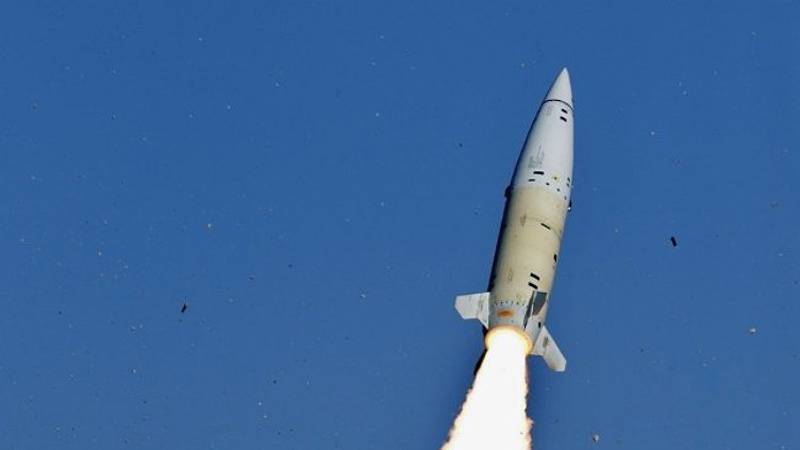
Lockheed Martin will upgrade the ATACMS tactical missile system of the ground forces in accordance with the contract worth 78 million dollars announced in January 2016.
Increase mortality
Raytheon's main product in the field of 155-mm artillery is Excalibur Ib (M982A1) - a high-precision long-range projectile with GPS guidance, which, according to Daniels, was shot out more than 827 times in combat conditions.
“Excalibur increases the range of American howitzers from 30 to 40 km and provides an average error in the range of less than two meters at all ranges,” he said. “Its vertical angle of incidence on the target maximizes lethality and reduces the risk of indirect damage.”
Daniels said that Excalibur was once shot at a target, within the 75 radius of meters from which his soldiers were, and this was "real proof of his accuracy and confidence of soldiers and marines in Excalibur projectile performance and reliability." Excalibur is in service with the army and the USMC and several foreign buyers, including Australia, Canada, the Netherlands and Sweden. Also there are several customers in the queue for it, who can count on participation in the program of selling military property to foreign states.
There are also a number of suppliers in the field of 120-mm and 155-mm ammunition, including companies Nammo and Finmeccanica. Nammo Executive Director Vegard Sand announced a new 155-mm high-range high-explosive fragmentation projectile, which has significantly less dispersion compared to previous systems.
According to Sand, Nammo has also continuously worked on the development and modification of new versions of its 15 mm projectile for more than 120 years. tank Leopard 2. From 2002 to 2009, she worked on the new Insensitive Munition High Explosive – T, a new inert high-explosive fragmentation projectile. In collaboration with KMW, he was qualified for the Leopard 2A4 of the Norwegian army and was shipped to other countries, including Canada, Chile, Norway and Spain.
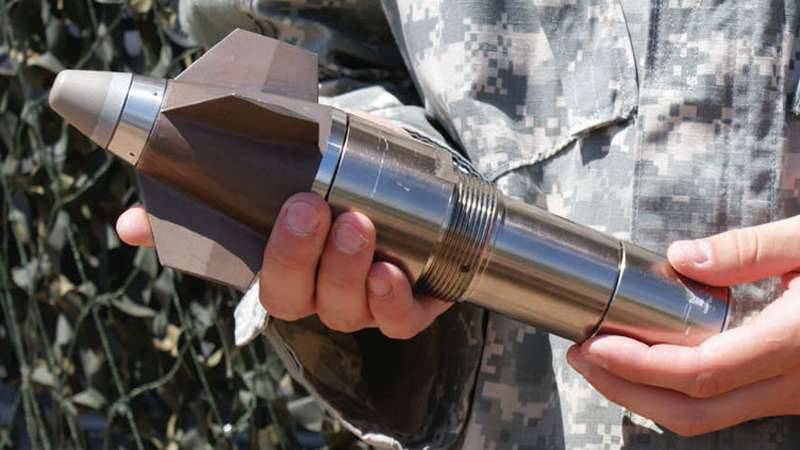
The first shipments of PGK fuses to Australia were from December 2015 to January 2016.
Work for HATCHET
Orbital ATK's Hatchet ultra-small, gliding, guided munition is designed to be dropped from light aircraft. The company sees several roles for its system, including application in conjunction with unmanned aerial vehicles (UAVs). According to the company, when firing from a rocket launcher, the Hatchet projectile "will triple the high-precision combat load of the AC-130 special operations aircraft." The aircraft has a mounting device that can take various launchers with low drag.
AC-130 - flying artillery battery for direct support of ground forces on the battlefield
However, according to a company representative, first of all, this weapon system is considered in close conjunction with the UAV. “The Hatchet fits roughly into the body of a 60mm mortar round. UAVs are great for a new system because it has a small footprint. UAVs are mainly used for reconnaissance, but we thought about how to help them become not only reconnaissance, but also armed vehicles,” he explained.
Orbital ATK Ultra-Small Planning Managed Hatchet Ammunition
A company spokesman also said that Hatchet’s development was driven by an increased need for higher accuracy. The projectile is very small, but since there is no projectile in it, the power of its warhead can be maximized. More than half of the mass of the projectile is the combat unit.
“We see prospects for such systems, since their high accuracy allows us to apply just as much lethality as is necessary for this purpose. That is, in our small form factor lies very good mortality and very high accuracy. ”
Programmable variations
The German company Rheinmetall produces ammunition of various types and all popular calibers. In the field of 120 caliber mm, it manufactures a smooth-bore gun, which is the main weapon of the Leopard 2 and Abrams M1A1 tanks, which are in service with many countries. In the last press release, the company presented information about its new HE Temp DM120 11-mm tank ammunition, which has a programmable warhead and a programmable air detonator that operates at distances up to 5 km.
Ammo DM11
The company also offers the less expensive HE SQ (high-explosive super quick - high-explosive super-fast) RH31. The press release says that the RH31 projectile "has the function of a shock fuse without delay, which does not require modification of the entire system." Several operators of the M1 and Leopard 2 tanks placed orders for both types of ammunition.
Under the designation “Multi-Purpose DM11”, the USCM has already used the DM11 projectile to combat unarmored and easily armored targets in asymmetric conflicts, such as in Afghanistan.
Finmeccanica is also a notable player, offering its 155-mm Vulcano family ammunition to the market. A company representative drew attention to the increased accuracy of modern weapons. Finmeccanica is committed to OTO Melara, a manufacturer of modern weapons, which has been producing ammunition and weapon systems for many years with its line of ammunition. She fully joined Finmeccanica at the start of 2016.
Vulcano family projectile
The Vulcano family of guided munitions includes several types of projectiles, including the 155-mm version, which uses inertial guidance and GPS guidance, as well as semi-active laser homing to target the final trajectory segment. According to a company representative, in the middle of this year, the qualification of the 155-mm Vulcano projectile by the Italian and German defense ministries will begin.
Misty Holmes, Head of High-Precision Systems at Lockheed Martin, also addressed the topic of improving the accuracy of precision-guided munitions in recent years. "The main technological breakthrough is to improve accuracy in order to reduce indirect damage and reduce the number of unexploded submunitions of cluster weapons."
Holmes also could not avoid the high-mobility rocket system HIMARS (High Mobility Artillery Rocket System) of her company, which allows high-precision strikes at ranges from 15 to 300 km. HIMARS can launch missiles ATACMS (Army Tactical Missile System - tactical missile system of the ground forces) and GMLRS (Guided Multiple Launch Rocket System - guided missile for salvo fire systems). The main customers are the US Army and Marines, but Holmes also said that the order book from Europe and the Middle East is growing.
“The system can be seamlessly integrated into the architecture of joint strikes against the enemy’s deep rear and timely destroy and neutralize enemy missile positions, operational control points and priority targets,” she added.
The Israeli company MTC supplies systems for high-precision ammunition for ground forces, including pyrotechnic devices for rockets and planning bombs, and mechanical horoscopes for measuring roll of anti-tank missiles, for example Rafael Spike.
Additional device for targeting missiles and mortar shells from Canard Actuation System of the Israeli company MTC
The Director of Industrial Affairs spoke about the Canard Actuation System missile and mortar control unit (CAS). The system has four independent wings that are deployed and controlled by four DC motors.
MTC sees several ways to expand their business. Her representative commented that India is a new market for the company and, moreover, the United States also represents a huge market for the CAS system. He said that his company, along with other companies in the sector, had focused on increasing range and accuracy. But all this should be achieved while keeping the cost at the same level.
“Our main task today is to increase the accuracy level of ammunition, but for significantly less money,” he said. “The need for low-cost but high-precision ammunition is very high.”
Materials used:
www.raytheon.com
www.orbitalatk.com
www.lockheedmartin.com
www.nammo.com
www.leonardocompany.com
www.rheinmetall.com
www.mtcind.com
www.wikipedia.org
en.wikipedia.org

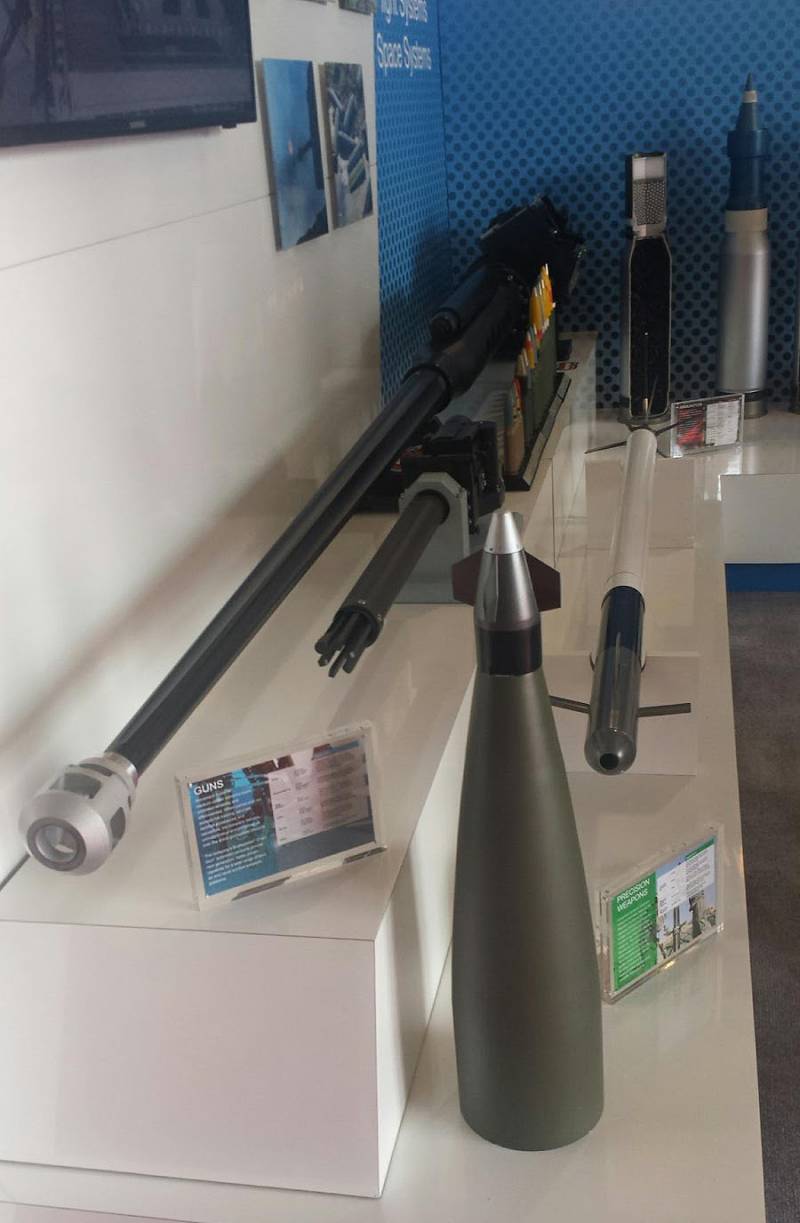
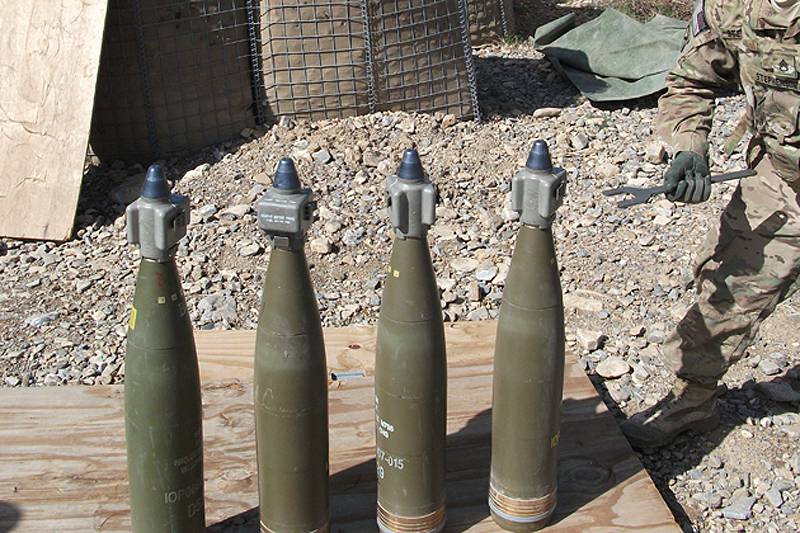

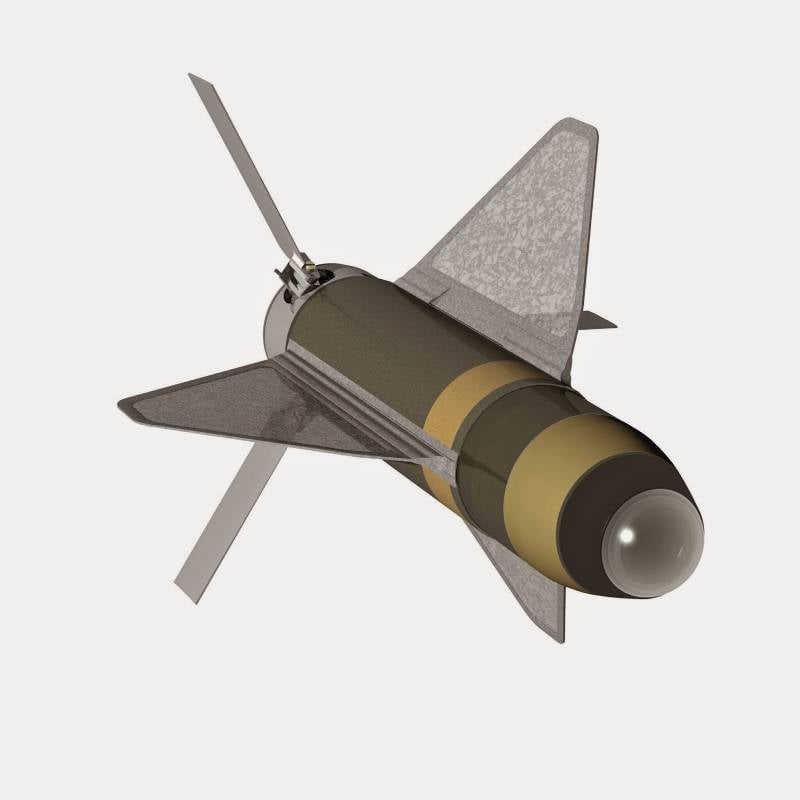
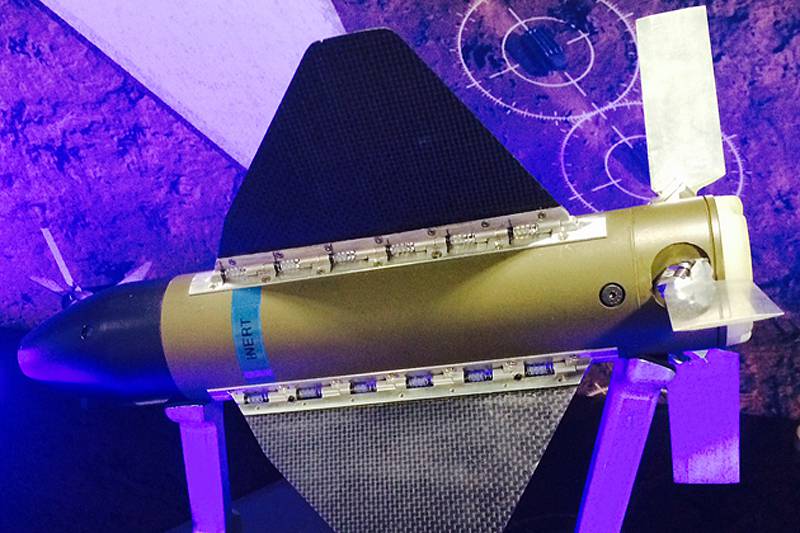
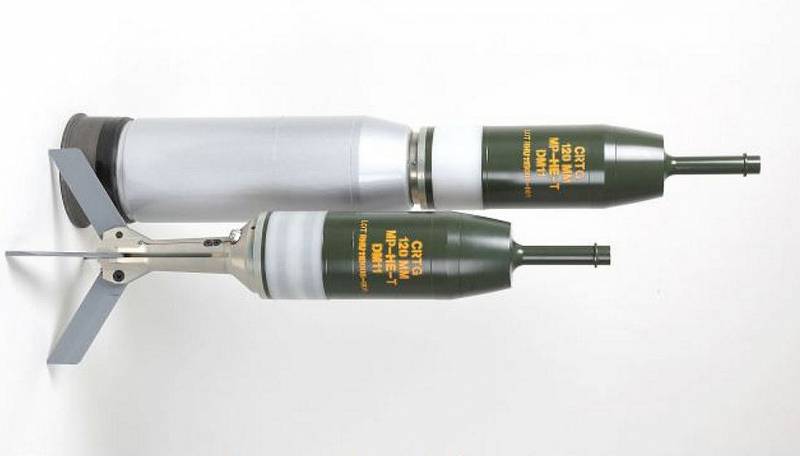
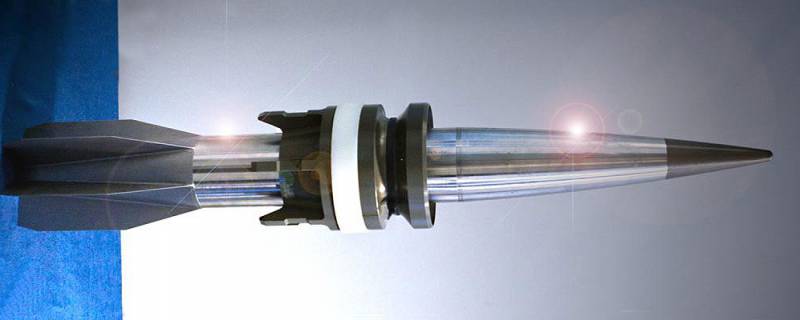
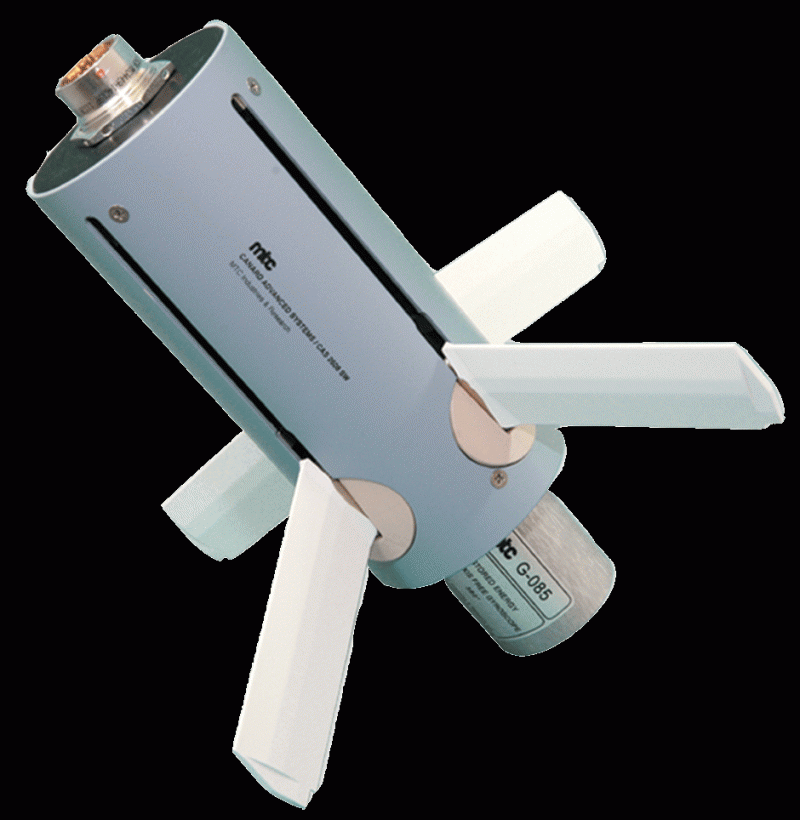
Information